
The Deep Sea Drilling Project (DSDP) was an ocean drilling project operated from 1968 to 1983. The program was a success, as evidenced by the data and publications that have resulted from it. The data are now hosted by Texas A&M University, although the program was coordinated by the Scripps Institution of Oceanography at the University of California, San Diego. DSDP provided crucial data to support the seafloor spreading hypothesis and helped to prove the theory of plate tectonics. DSDP was the first of three international scientific ocean drilling programs that have operated over more than 40 years. It was followed by the Ocean Drilling Program (ODP) in 1985, the Integrated Ocean Drilling Program in 2004 and the present International Ocean Discovery Program in 2013.

Microcachrys tetragona, known as creeping pine or creeping strawberry pine, is a species of dioecious conifer belonging to the podocarp family (Podocarpaceae). It is the sole species of the genus Microcachrys. The plant is endemic to western Tasmania, where it is a low shrub growing to 1 m tall at high altitudes. Its leaves are scale-like, arranged in opposite decussate pairs, superficially resembling those of the unrelated Diselma archeri (Cupressaceae). It shares the common name Creeping pine with several other plants. Females produce tiny, red, edible berries in summer.
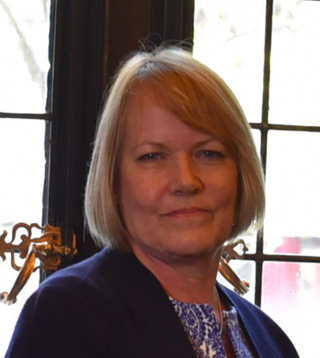
Professor Dame Jane Elizabeth Francis, is the Director of the British Antarctic Survey. She previously worked as Professor of Palaeoclimatology at the University of Leeds where she also was Dean of the Faculty of Environment. In 2002 she was the fourth woman to receive the Polar Medal for outstanding contribution to British polar research. She is currently the Chancellor of the University of Leeds.
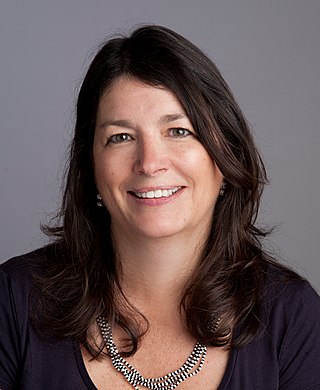
Maureen E. Raymo is an American paleoclimatologist and marine geologist. She is the Co-Founding Dean Emerita of the Columbia Climate School and the G. Unger Vetlesen Professor of Earth & Environmental Sciences at Columbia University. From 2011 to 2022, she was also Director of Lamont-Doherty Earth Observatory's (LDEO) Core Repository and, until 2024, was the Founding Director of the LDEO Hudson River Field Station. From 2020 to 2023, she was first Interim Director then Director of Lamont-Doherty Earth Observatory, the first climate scientist and first female scientist to head the institution.

Nerilie Abram is an Australian professor at the ANU Research School of Earth Sciences, Australian National University, Canberra, Australia. Her areas of expertise are in climate change and paleoclimatology, including the climate of Antarctica, the Indian Ocean Dipole, and impacts on the climate of Australia.
Daniela Rubatto is a Professor of geochemistry at the University of Bern, Switzerland. Her areas of interest and expertise are in isotope geochemistry, metamorphic petrology, mineralogy, tectonics, inorganic geochemistry, and geochronology.

Patricia Margaret Selkirk, is an Australian plant biologist and ecologist. Her career has focused on Antarctic and subantarctic terrestrial ecosystems and she is recognized as being a pioneering female Australian Antarctic scientist.

Robin Elizabeth Bell is Palisades Geophysical Institute (PGI) Lamont Research Professor at Columbia University's Lamont–Doherty Earth Observatory and a past President of the American Geophysical Union (AGU), 2019–2021. Dr. Bell was influential in co-ordinating the 2007 International Polar Year and was the first woman to chair the National Academy of Sciences Polar Research Board. She has made numerous important discoveries with regard to subglacial lakes and ice sheet dynamics, and has a ridge, called Bell Buttress, in Antarctica named after her.
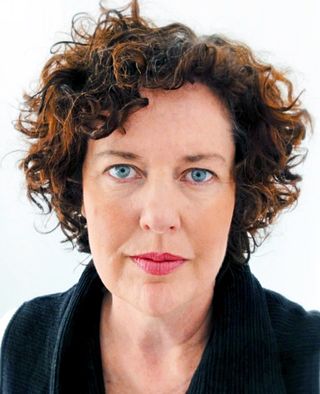
Dana Michelle Bergstrom is a senior researcher at the Australian Antarctic Division most notable for her work on identifying and mitigating risks against Antarctic and Sub Antarctic Ecosystems.

Jan Maree Strugnell is an Australian evolutionary molecular biologist. She is a professor and director in the Centre for Sustainable Tropical Fisheries and Aquaculture at James Cook University, Townsville, Australia. Strugnell's work has investigated population and species level molecular evolution in Antarctic and deep sea species in the context of past geological and climatic change. Strugnell's work also uses genetic tools to help solve bottlenecks in aquaculture and fisheries industries.

Justine Shaw is an Australian Antarctic researcher, best known for her conservation work on subantarctic islands, currently working at the Queensland University of Technology. She has a wide global research network, having worked in Australia, South Africa, sub-Antarctic/Antarctic and the Arctic.
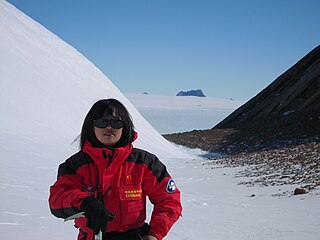
Wei Lijie is a Chinese Antarctic researcher, best known for her work on the paleontology and stratigraphy of Tibet and the Antarctic.

Rosemary Anne Askin, also known as Rosemary Askin Cully, is a New Zealand geologist specialising in Antarctic palynology. She was a trailblazer for women in Antarctic science, becoming the first New Zealand woman to undertake her own research programme in Antarctica in 1970.

Christine Siddoway is an American Antarctic researcher, best known for her work on the geology and tectonics of the Ford Ranges in western Marie Byrd Land. Other discoveries relate to preserved records of continental-interior sedimentation during the Sturtian glaciation, Cryogenian Period, in Rodinia, and evidence of a reduced Pliocene extent of the West Antarctic ice sheet, based upon investigation of clasts transported to/deposited in deep water by Ice rafting in the Amundsen Sea.
Sophie Warny is a Belgian Antarctic researcher, best known for her work on palynology. As an associate professor at Louisiana State University in the Department of Geology and Geophysics and one of the curators at the Museum of Natural Science, Warny studies past climate change patterns by examining fossilized pollen and spores. She is currently the vice president of the Gulf Coast Section of the Society for Sedimentary Geology (GCSSEPM).

There may have been women in Antarctica, exploring the regions around Antarctica for many centuries. The most celebrated "first" for women was in 1935 when Caroline Mikkelsen became the first woman to set foot on one of Antarctica's islands. Early male explorers, such as Richard Byrd, named areas of Antarctica after wives and female heads of state. As Antarctica moved from a place of exploration and conquest to a scientific frontier, women worked to be included in the sciences. The first countries to have female scientists working in Antarctica were the Soviet Union, South Africa and Argentina.

Ian Frederick Allison AO AAM FAA is an internationally recognised Australian glaciologist and climate scientist. He was elected a Fellow of the Australian Academy of Science in 2016 in recognition of his work in understanding the role of "sea ice and Antarctica in the global climate system".

Bruce Peter Luyendyk is an American geophysicist and oceanographer, currently professor emeritus of marine geophysics at the University of California, Santa Barbara. His work spans marine geology of the major ocean basins, the tectonics of southern California, marine hydrocarbon seeps, and the tectonics and paleoclimate of Antarctica. His research includes tectonic rotations of the California Transverse Ranges, participation in the discovery of deep-sea hydrothermal vents, quantitative studies of marine hydrocarbon seeps, and geologic exploration of the Ford Ranges in Marie Byrd Land, Antarctica.
Vivi Vajda is a Swedish palaeontologist. She is Professor and head of palaeobiology at the Swedish Museum of Natural History.
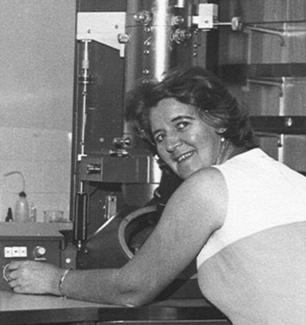
Johanna Alida Coetzee was a researcher in the field of Palynology at the University of the Free State and a pioneer in the analysis of fossil pollen. Her DSc thesis received worldwide recognition and praise from the eminent glacial geologist Richard Foster Flint and helped recognise the significance of temperature changes in controlling shifts in global and local vegetation zones.

















